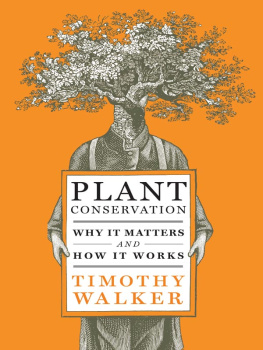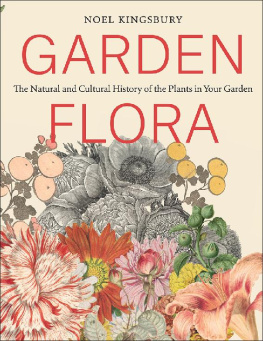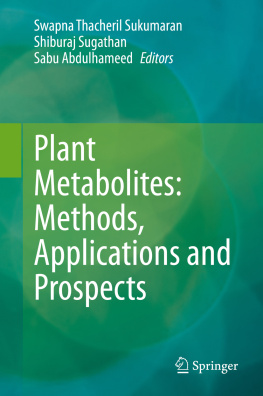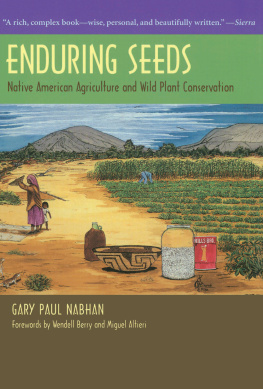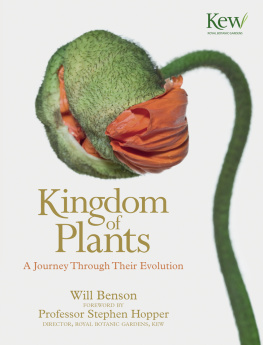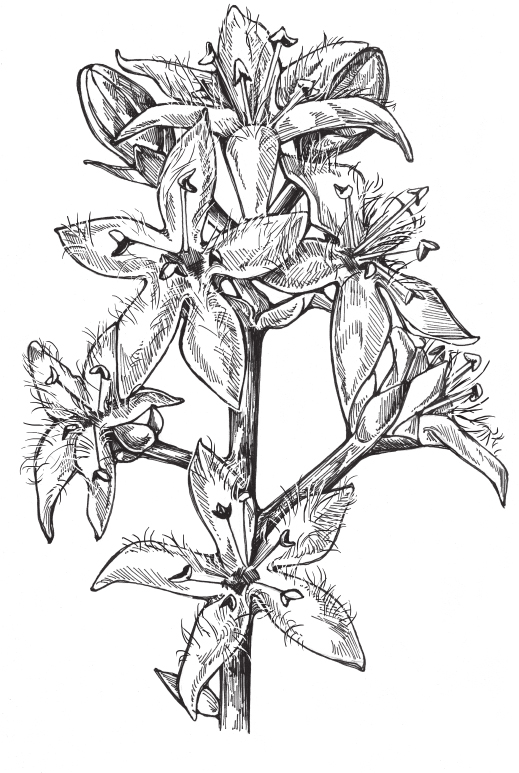
Menyanthes trifoliata, the beautiful rare bog bean whose lovely image drew extraordinary attention to its plight, also proving that it is easier to protect beautiful plants than dull ones.
Plant Conservation
Why It Matters and How It Works
Timothy Walker
Timber Press
Portland / London
I would like to acknowledge the vast amount of field work that goes into plant conservation the world over. Most of this is not done for monetary reward but because those carrying out the work believe that it is The Right Thing To Do.
THIS BOOK IS DEDICATED TO
Bill Potter
Joe Talbot
Gren Lucas
Hugh Dickinson
Copyright 2013 by Timothy Walker. All rights reserved.
Published in 2013 by Timber Press, Inc.
Illustrations on by Sarah C. Rutherford
Illustration on .
Water Requirements for Energy Production on from Robert F. Service, Another biofuels drawback: the demand for irrigation. Science: 326, 516.
Thanks are offered to those who granted permission for use of materials. While every reasonable effort has been made to contact copyright holders and secure permission for all materials reproduced in this work, we offer apologies for any instances in which this was not possible and for any inadvertent omissions.
The Haseltine Building
133 S.W. Second Avenue, Suite 450
Portland, Oregon 97204-3527
timberpress.com
6a Lonsdale Road
London NW6 6RD
timberpress.co.uk
Book design by Breanna Goodrow
Library of Congress Cataloging-in-Publication Data
Walker, Timothy, 1958
Plant conservation : why it matters and how it works / Timothy Walker.
p. cm.
Includes bibliographical references and index.
ISBN 978-1-60469-260-0
1. Plant conservation. I. Title.
QK86.W35 2013
333.95316dc23
2013008410
A catalogue record for this book is also available from the British Library.
Contents
Without plants, there is no life. The functioning of the planet, and our survival, depends on plants. Our vision is of a positive, sustainable future where human activities support the diversity of plant life and where in turn the diversity of plants support and improve our livelihoods and well-being.
Global Strategy for Plant Conservation 20112020,
Convention on Biological Diversity
PREFACE
A 2020 Vision for Plant Conservation
Without plants, humans would not exist.
Plants created the world in which our ancestors evolvedand plants have always been, and always will be, the only renewable, sustainable supply of all our needs. The reason they are able to do this is that about 1.2 billion years ago a single-celled organism press-ganged another organism into its service. This unwitting volunteera cyanobacteriumhad come up with a neat trick. It used the suns energy to combine the water in which it was living with the carbon dioxide dissolved in that water and made some very useful stuff out of these abundant raw materials.
Since that time, plants crept out of the water, invaded land, and have become complex, multicellular organisms. On the back of their successes arose the animal kingdomthat includes us.
The clear result of this in our lifetime is that the future of Homo sapiens, and others, of course, is dependent upon the future of the plants. As important as it is to you to look after your bank accounts and, on the larger scale, support our banking systems, it is as important to look after biological systems. Plants have given us almost everything that we need; they have provided what we need not only to survive on planet Earth, but to do so in comfort. They provide us with food and drinks, their fibres are used to build houses and create cloth, and half of the chemotherapies against cancer are derived from plants. Clearly, there is the sheer beauty of them, as well as our desire to preserve our current standard of livingand our cravings make a considerable contribution this, such as a very pleasing chocolate bar you might have just eaten, in which case your brain would be telling you, in no uncertain terms: plants are very important.

To help in the grand strategies and ongoing work to ensure that we Homo sapiens survive and that what we cherish is protected, I wrote this book. It is my desire to put the record straight: so much of the news about plant conservation is negative and I wanted to show how much positive and effective activity is taking place around the world. Plant products are very important, are the basis of human civilization; and if we do not look after them our childrens futureand, yes, even our futurewill be very uncomfortable. I also wanted to show how we can, as individuals, play a part in conservation, preventing the extinction of even one more species. So while so much of conservation work appears to be carried out by government agencies and nongovernmental organizations, when we stop to think about it, these groups are all staffed by individuals playing their parts: field botanists, reserve managers, horticulturists, ecologists, teachers, both professional and backyard garden-variety gardeners, and othersall of whom, in partnership and individual practice, have skills that are at the centre of so much conservation activity. Yet too many gardeners cannot see how essential their work is, and above all how they can partner their skills and involvement.
While we are fortunate to have such a diversity of people caring for and having a strong desire to see plant life continue, it would be easy for some things to be missed. It would be very unfortunate, say, if only the attractive plants were conserved, leaving the dull but ecologically more important species neglected. What has become clear, then, and understood to be necessary, is a coordinated strategy that covers all the bases on the playing field of conservation. This is exactly what we have in the form of the Global Strategy for Plant Conservation (GSPC)and this, of course, could only happen because of a bunch (surely an apt collective noun for us plant lovers?) of people and several groups made it happen.
In 1999 the Sixteenth International Botanical Congress was held in the United States, in St. Louis, Missouri, the home turf of the Missouri Botanical Garden. At that meeting there was a great deal of horizon scanning with the impending new millennium starting in the following year. Of the many groups at the congress was one comprising the directors of botanic gardens and similar institutions. Together the directors decided that what was needed was some form of coordinated plan that ensured that all aspects of plant conservation were coveredand they had the visionary idea that there should be set targets, and that those targets should be met by 2010. After all, how could we be sure that progress was being made unless there was at least a benchmark against which future activity could be judged?
So, in April 2000, a small group of men and women from all around the world met at the botanical garden on one of Spains well-known Canary Islands, Gran Canaria. After just a few days at Jardin Botnico Canario Viera y Clavijo, a four-page document was produced, calling upon the countries that signed the Convention on Biological Diversity to agree to support a target-driven strategy for plant conservation. The strategy specified sixteen targets that fell under five broad objectives. This was the beginning of what would be called the Global Strategy for Plant Conservation.
Next page
